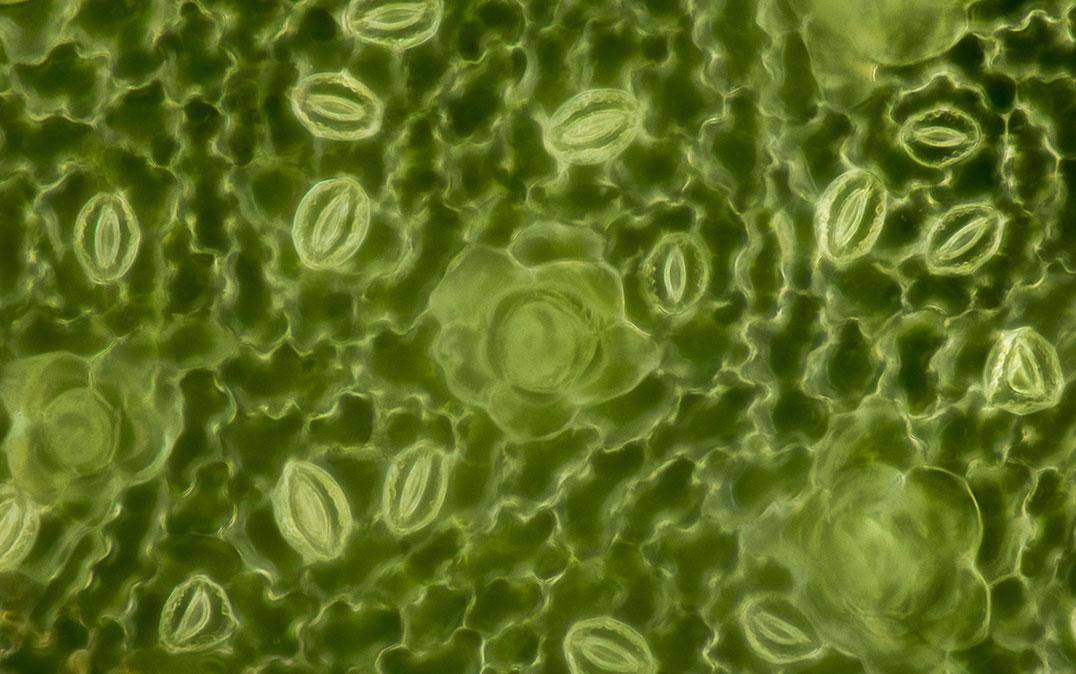Research News
Beating Brassica Blight: How Treatment with Amino Acids Can Prevent Disease
 Image by Cornel Constantin/Shutterstock
Image by Cornel Constantin/Shutterstock
Researchers from the University of Tsukuba find that treatment with multiple amino acids protects cabbage leaves spray-inoculated with Pseudomonas cannabina pv. alisalensis via stomatal responses
Tsukuba, Japan—Plant diseases cause major agricultural losses annually, but the tools used to fight them can create more problems than they solve. Now, researchers from Japan have discovered a new tool that will not only help save crops, but also limit collateral damage.
In a recently published study, researchers from the University of Tsukuba have revealed that spraying cabbage leaves with a number of different amino acids can prevent a blight-causing bacterium from infecting the plants.
Brassicas, the group that includes broccoli and cabbage, comprise one of the most economically important plant families globally. Pseudomonas cannabina pv. alisalensis (Pcal), a bacterium that causes blight in this group, has a major impact on crop production. The most common treatments include copper fungicides and antibiotics. Unfortunately, fungicide resistance is on the rise, and resistant Pcal strains have already been found.
"Safe, sustainable, and effective ways of controlling Pcal are greatly needed," says senior author of the study, Professor Yasuhiro Ishiga. "To explore these, we looked for amino acids that limit disease development."
Previous research had shown that a number of amino acids can induce pathogen resistance in plants. However, the use of amino acids to control bacterial diseases had not been well studied. In this study, cabbage leaves were sprayed with amino acids and inoculated with Pcal. The researchers found that the application of multiple amino acids reduced bacterial populations and disease symptoms in cabbage that had been spray-inoculated with Pcal, but not in cabbage that had been syringe-inoculated. This indicates that the amino acids exhibited a protective effect on the plants before Pcal was able to infect them.
The main infection route for Pcal is via a plant's stomata - tiny pores in the epidermis that can be opened and closed to enable gas exchange. Responses in the cabbages' stomata were observed after treatment with amino acids, and some amino acids were found to trigger stomatal closure. Additionally, the researchers showed that reducing the size of the stomatal opening limited the entry of bacteria into plants, resulting in a reduction of disease symptoms. This effect was specifically demonstrated for cysteine, glutamic acid, and lysine.
"Our results indicate that a moderate reduction of stomatal aperture width is sufficient to restrict entry by bacteria and the development of disease symptoms," explains Professor Ishiga.
The research showed that the plants' stomatal responses at various concentrations differed according to the amino acids. The researchers concluded that although treatments will need to be considered in light of each amino acid and plant-bacterial interaction, appropriate manipulation of stomatal aperture could be a powerful and sustainable new way of controlling bacterial diseases.
###
This work was supported in part by Japan Society for the Promotion of Science (JSPS) Grant Number: 19K06045 (Y.I.) and JSPS Grant Number: 21J10765 (N.S.).
Original Paper
The article, "Controlling stomatal aperture, a potential strategy for managing plant bacterial disease," was published in Plant Science at DOI: 10.1016/j.plantsci.2022.111534
Correspondence
Assistant Professor ISHIGA Yasuhiro
Faculty of Life and Environmental Sciences, University of Tsukuba
Related Link
Faculty of Life and Environmental Sciences




